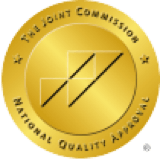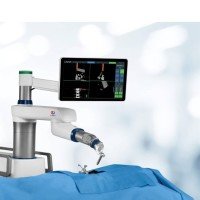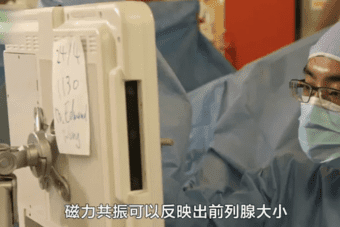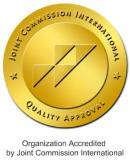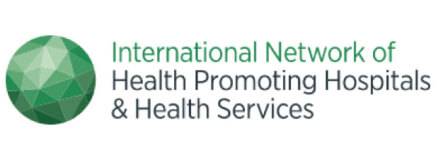Current Situation of Prostate Cancer
Prostate issues are very common in Hong Kong. In 2022, 519 men died from prostate cancer, accounting for 6.2% of total male cancer deaths. There were 2,758 new cases, making it the third most common cancer among men.
What is Prostate Cancer?
A part of the male reproductive system, the prostate is a gland that produces a thick fluid that forms part of semen. Prostate cancer occurs when there is an abnormal growth of cells in the prostate gland, and is often seen in patients over the age of 50. As prostate enlargement is quite common in older men, combined with the fact that many prostate cancers grow slowly, it may be difficult to detect prostate cancer early. As a result, many patients do not get diagnosed until the cancer is already at an intermediate or advanced stage.
Symptoms
- Frequent urination
- Difficulty urinating
- Pain during urination
- Blood in the urine or semen
- Pain in the pelvis or spine
- Swelling in the legs or feet
Causes + Risk Factors
The causes of prostate cancer remain unclear, but risk factors include age, smoking, and diets heavily comprised of processed foods.
Risk Factors
Age: prostate cancer is most common in men over the age of 50
Family history: risk increases if a blood relative has been diagnosed with prostate cancer
Prostate Cancer Complications
The progression of prostate cancer can lead to various complications, especially if cancer cells spread or during the treatment process. Understanding potential complications helps patients prepare in advance and discuss appropriate coping strategies with their doctors.
1. Urinary Problems
A prostate tumor may compress the urethra, leading to difficulty urinating, frequent urination, increased nocturia, or weak urine flow.
2. Sexual Dysfunction
Prostate cancer and its treatments—such as surgery, radiation therapy, or hormone therapy—can affect sexual function, leading to erectile dysfunction or decreased libido.
3. Bone Metastasis and Fracture Risk
Advanced prostate cancer tends to spread to the bones, leading to bone pain, fractures, or spinal compression, which can severely impact mobility.
4. Kidney Issues
If the tumor affects the bladder or ureters, it may obstruct urine flow, increasing the burden on the kidneys and potentially leading to kidney failure.
5. Anemia and Fatigue
Cancer cells can affect bone marrow function, or hormone therapy may reduce red blood cell production, potentially leading to anemia. This can cause fatigue, dizziness, and shortness of breath.
6. Lymphedema
When cancer spreads to lymph nodes or surgery affects the lymphatic system, it may cause swelling in the lower body, impacting daily activities.
Diagnosis
To increase the survival rate of prostate cancer, medical practitioners recommend that males over the age of 55 be regularly screened for prostate cancer, even in the absence of symptoms. For those who suspect they may have prostate cancer, or are experiencing symptoms, a specialist may recommend an ultrasound or MRI.
- Prostate cancer screening: the doctor will determine risk of prostate cancer by assessing symptoms, and by conducting a digital rectal exam, urine flow test, and kidney function test.
- Blood test: if the patient has an enlarged prostate, infection of the prostate gland, or prostate cancer, his prostate-specific antigen (PSA) level will be significantly higher.
- Ultrasound: this test may involve two components: a transrectal ultrasound where a small probe is inserted into the rectum to obtain a clearer picture of the prostate gland; and a biopsy where samples of the prostate are retrieved for further examination under a microscope. The latter is often performed if the PSA level is found to be high.
- MRI: MRI may be used alongside transrectal ultrasound to better guide the biopsy and improve the accuracy of diagnosis.
Prostate Cancer Stages and Survival Rates
The staging of prostate cancer determines its severity, treatment options, and impact on a patient’s survival rate. Staging is typically assessed based on the extent of cancer spread, PSA (Prostate-Specific Antigen) levels, and tumor aggressiveness (Gleason Score).
- Stage 1:Cancer cells are confined to the prostate with no signs of spread. The five-year survival rate is approximately 95%.
- Stage 2:Cancer cells remain confined to the prostate, but the tumor is larger and may affect both prostate lobes. The five-year survival rate is approximately 85-90%.
- Stage 3:Cancer cells have breached the prostate capsule and may have spread to nearby tissues, such as the seminal vesicles or lymph nodes, but not to distant organs. The five-year survival rate is approximately 60-80%.
- Stage 4:Cancer cells have spread to nearby organs (e.g., bladder, rectum) or distant organs (e.g., bones, lungs). The five-year survival rate is approximately 50-70% if limited to nearby organs and less than 30% if spread to distant organs.
Treatment
Treatment options for prostate cancer depend on the stage and progression of the cancer. Treatment for early-stage prostate cancer may include active surveillance, surgery, or radiation therapy.
|
Active Surveillance |
Since early-stage prostate tumors grow slowly, they may not directly threaten a patient's lifespan, especially in older individuals. Doctors may recommend regular check-ups instead of immediate treatment, monitoring the condition through PSA (Prostate-Specific Antigen) tests and imaging scans. This approach is suitable for patients with slow-growing, low-risk tumors and elderly individuals who are not candidates for invasive treatment. |
|
Radiation Therapy |
Using high-energy radiation or proton therapy to directly target prostate tumor cells, destroying their chromosomes and preventing cancer cells from growing and surviving. |
|
Surgery |
Surgery is one of the primary treatment methods for prostate cancer. Depending on the patient's condition, doctors may perform a partial prostate removal. In some cases, nearby lymph nodes are also removed to achieve long-term disease control.
Common Surgical Procedures
|
|
Hormone Therapy |
If prostate cancer cells have spread to the bones or other vital organs, the treatment strategy focuses on reducing testosterone levels in the body to slow cancer cell proliferation. This approach is generally used for advanced or metastatic prostate cancer patients.
Following treatment, patients may experience side effects such as hot flashes, osteoporosis, and reduced sexual function. |
|
Radioisotope therapy |
Radioisotope therapy is a type of targeted radiation therapy used to treat patients with advanced prostate cancer.
|
|
Chemotherapy |
Chemotherapy, commonly referred to as chemo, is typically used for patients with advanced prostate cancer. It involves administering drugs that circulate through the bloodstream to effectively target cancer cells that have spread from the primary site to other areas of the body. The principle behind chemotherapy is to kill rapidly dividing cells. Since cancer cells divide more quickly than normal cells, they are more vulnerable to the effects of chemotherapy. |
|
Targeted Therapy |
Targeted therapy is a form of systemic therapy that delivers medications through the bloodstream to reach various parts of the body and kill cancer cells. This treatment specifically targets the genes and proteins associated with the growth of certain cancer cells (known as "targets"). Targeted drugs can block the functions that allow these cancer cells to grow or repair themselves, leading to their death, which is why it's called "targeted" therapy. |
Prostate Cancer Prevention
Prostate cancer is one of the most common cancers among men in Hong Kong. However, adopting a healthy lifestyle and undergoing regular screenings can significantly reduce the risk of developing the disease. Here are some effective prevention methods:
1. Healthy Diet
A high-fat diet may be linked to the development of prostate cancer. To reduce the risk, it is recommended to limit the intake of red meat, processed meats, and high-fat dairy products. Additionally, consuming antioxidant-rich fruits and vegetables, such as tomatoes (which contain lycopene), green tea, and soy-based foods (which contain isoflavones), may help inhibit cancer cell growth and lower the chances of developing prostate cancer. Moderate intake of foods rich in Omega-3 fatty acids, such as salmon, tuna, and flaxseeds, can also help reduce inflammation in the body, further strengthening the body's defense mechanisms.
2. Regular Exercise
Engaging in at least 150 minutes of moderate-intensity exercise per week—such as brisk walking, swimming, or cycling—helps maintain a healthy weight and reduces the risk of prostate cancer.
3. Maintain a Healthy Weight
Obesity is associated with both the development and progression of prostate cancer. It is recommended to maintain a healthy BMI through a balanced diet and regular exercise.
4. Regular Screening
Men aged 50 and above (or 45 and above for those with a family history) should undergo PSA (Prostate-Specific Antigen) testing and digital rectal examinations regularly to detect abnormalities early.
5. Avoid Smoking and Excessive Alcohol Consumption
Smoking and excessive alcohol intake may increase the risk of prostate cancer. It is recommended to quit smoking and consume alcohol in moderation.
Post-Treatment Care for Prostate Cancer
Post-treatment care for prostate cancer is crucial for recovery and reducing the risk of recurrence. Patients should follow medical guidance, make necessary lifestyle adjustments, and undergo regular medical monitoring to improve their quality of life and prevent complications.
Regular Follow-Ups and Health Monitoring
After treatment, patients should undergo regular PSA (Prostate-Specific Antigen) tests to monitor for cancer recurrence or spread. Initially, testing is recommended every 3 to 6 months, with adjustments based on the stability of the condition. Additionally, doctors may schedule imaging tests, such as MRI (Magnetic Resonance Imaging) or PSMA PET-CT (PSMA Positron Emission Tomography-Computed Tomography) scans, to ensure that cancer cells have not spread.
Lifestyle and Dietary Adjustments
- Healthy Diet: Increase intake of low-fat, high-fiber foods such as vegetables, whole grains, and legumes, while reducing red meat and high-fat dairy products to minimize inflammation.
- Regular Exercise: Engaging in moderate physical activities like brisk walking, swimming, or yoga can improve overall fitness and mood, reducing the risk of cancer recurrence.
- Avoid Smoking and Excessive Alcohol: Smoking and alcohol consumption can weaken the immune system and increase the risk of other diseases. It is advisable to quit smoking and limit alcohol intake.
Managing Side Effects and Complications
- Urinary Incontinence Management: Some patients may experience urinary incontinence after surgery. Kegel exercises are recommended to strengthen pelvic floor muscles and improve bladder control.
- Sexual Function Recovery: Radiation therapy or traditional surgery may impact erectile function. Doctors may suggest medication treatments (such as PDE5 inhibitors) or physical therapies (such as penile vacuum devices) to aid recovery.
- Bone Health Management: Hormone therapy can lead to osteoporosis. Patients should take calcium and vitamin D supplements and engage in weight-bearing exercises to maintain bone health.
Psychological and Emotional Support
After prostate cancer treatment, some patients may experience anxiety, depression, or stress-related issues. It is recommended to seek psychological counseling or join patient support groups to receive professional assistance and support from fellow survivors.
FAQ
Side Effects After Prostate Cancer Surgery
Prostate cancer surgery may lead to short-term or long-term side effects, with the most common ones including urinary incontinence, erectile dysfunction (sexual dysfunction), and weakened pelvic muscles.
- Urinary Incontinence: Surgery can affect bladder control. Patients can improve urinary function by strengthening pelvic floor muscles through Kegel exercises.
- Erectile Dysfunction: Nerve damage may cause difficulty in achieving erections. Doctors may suggest medications (such as PDE5 inhibitors), vacuum devices, or hormone therapy to support sexual function recovery.
Should Prostate Cancer Patients Change Their Diet?
Yes, to reduce the risk of recurrence and promote recovery, it is recommended to reduce high-fat diets, such as red meat, processed meats, and high-fat dairy products, to decrease bodily inflammation. Increase consumption of fruits and vegetables, such as tomatoes (containing lycopene), legumes (containing isoflavones), and green tea, which can help lower the risk of prostate cancer.
Additionally, increase intake of Omega-3 fatty acids, found in foods like salmon, tuna, and flaxseeds, to reduce inflammation and protect cardiovascular health. At the same time, limit refined sugars to avoid blood sugar fluctuations that may promote cancer cell growth. Through a balanced diet, patients can enhance recovery outcomes and reduce the likelihood of cancer recurrence.
Is Prostate Cancer Hereditary?
Prostate cancer has a hereditary tendency. If a close family member, such as a father or brother, has had prostate cancer, an individual's risk may increase by 2 to 3 times. Additionally, genetic mutations linked to BRCA1 and BRCA2 can further raise the likelihood of developing prostate cancer.
Men with a family history of the disease should consider regular PSA (Prostate-Specific Antigen) screenings to monitor their prostate health early.

